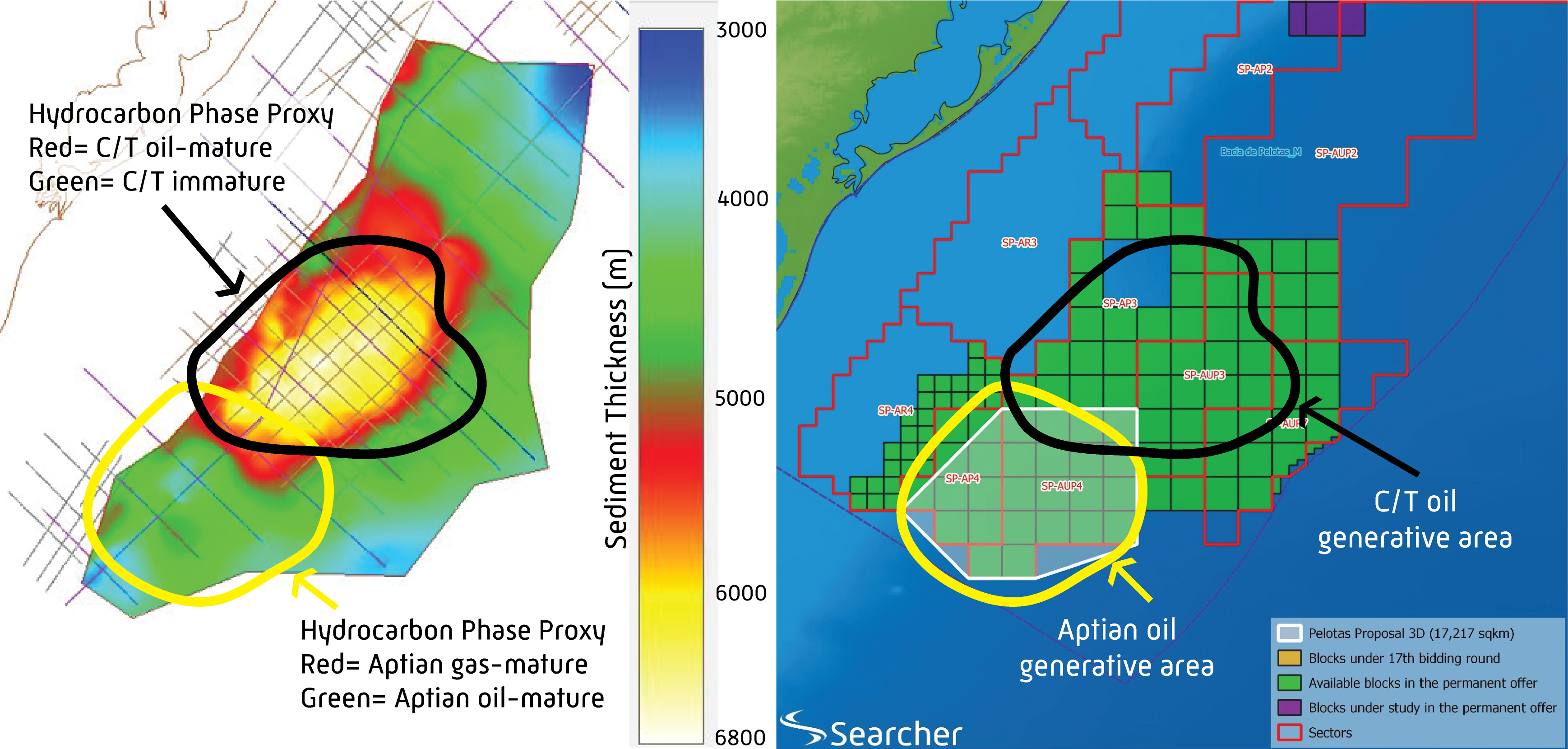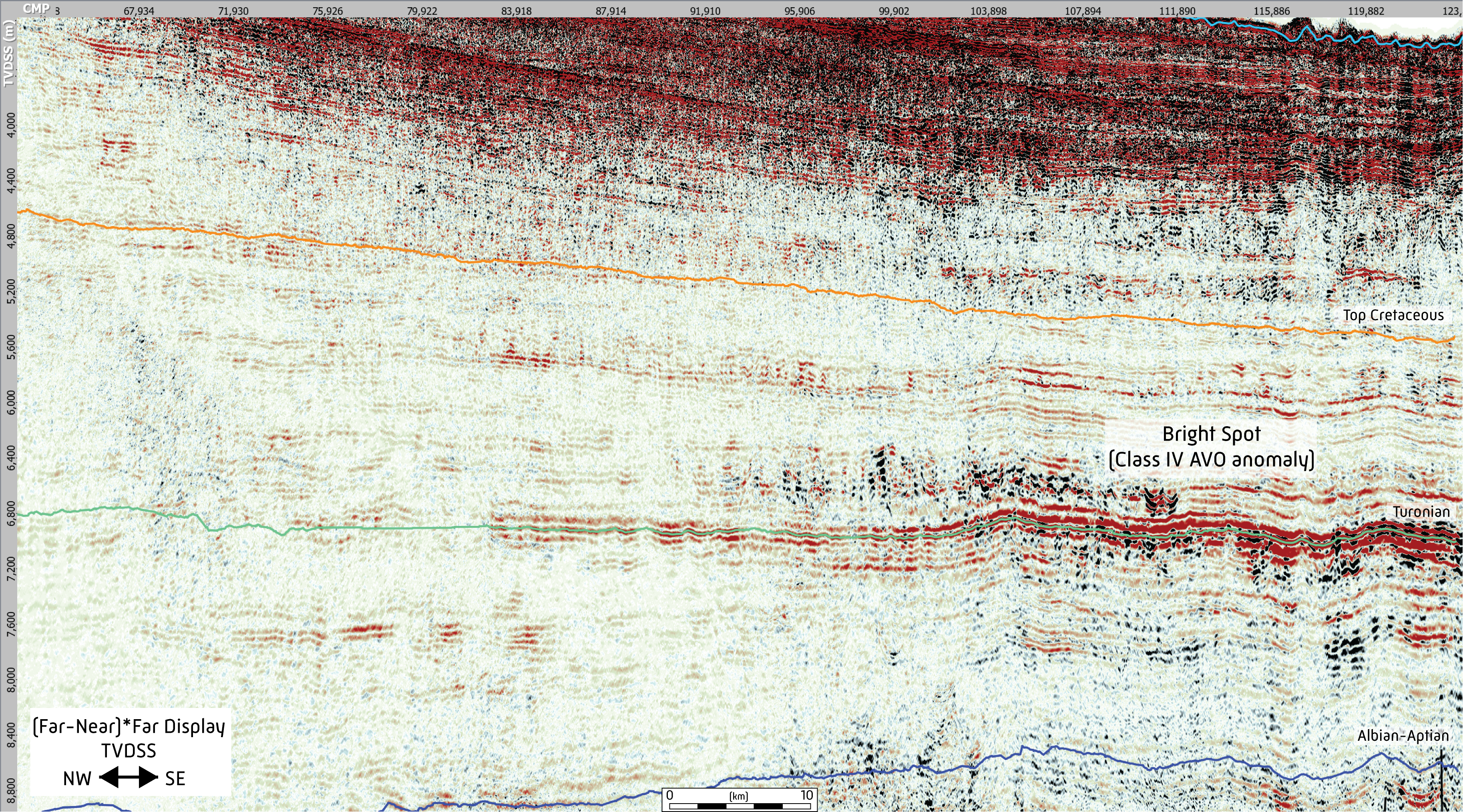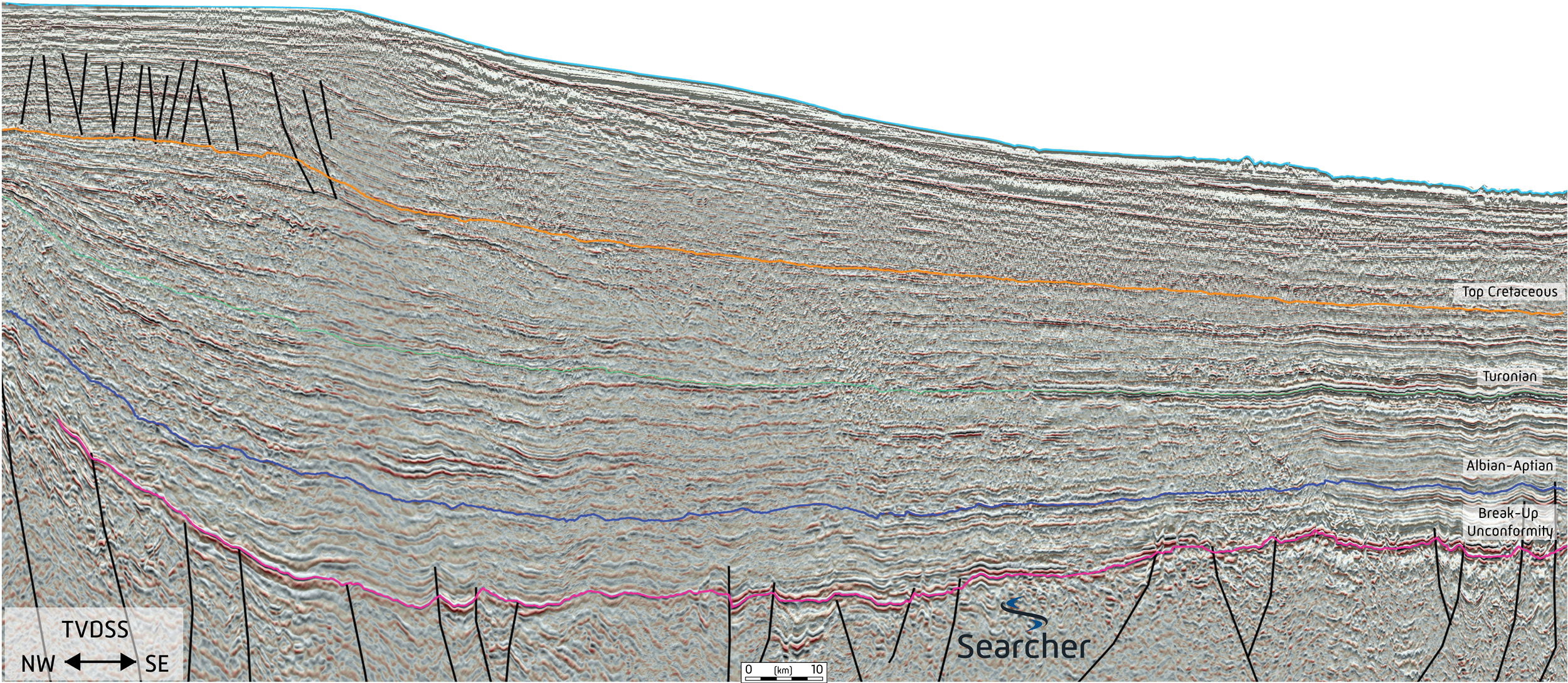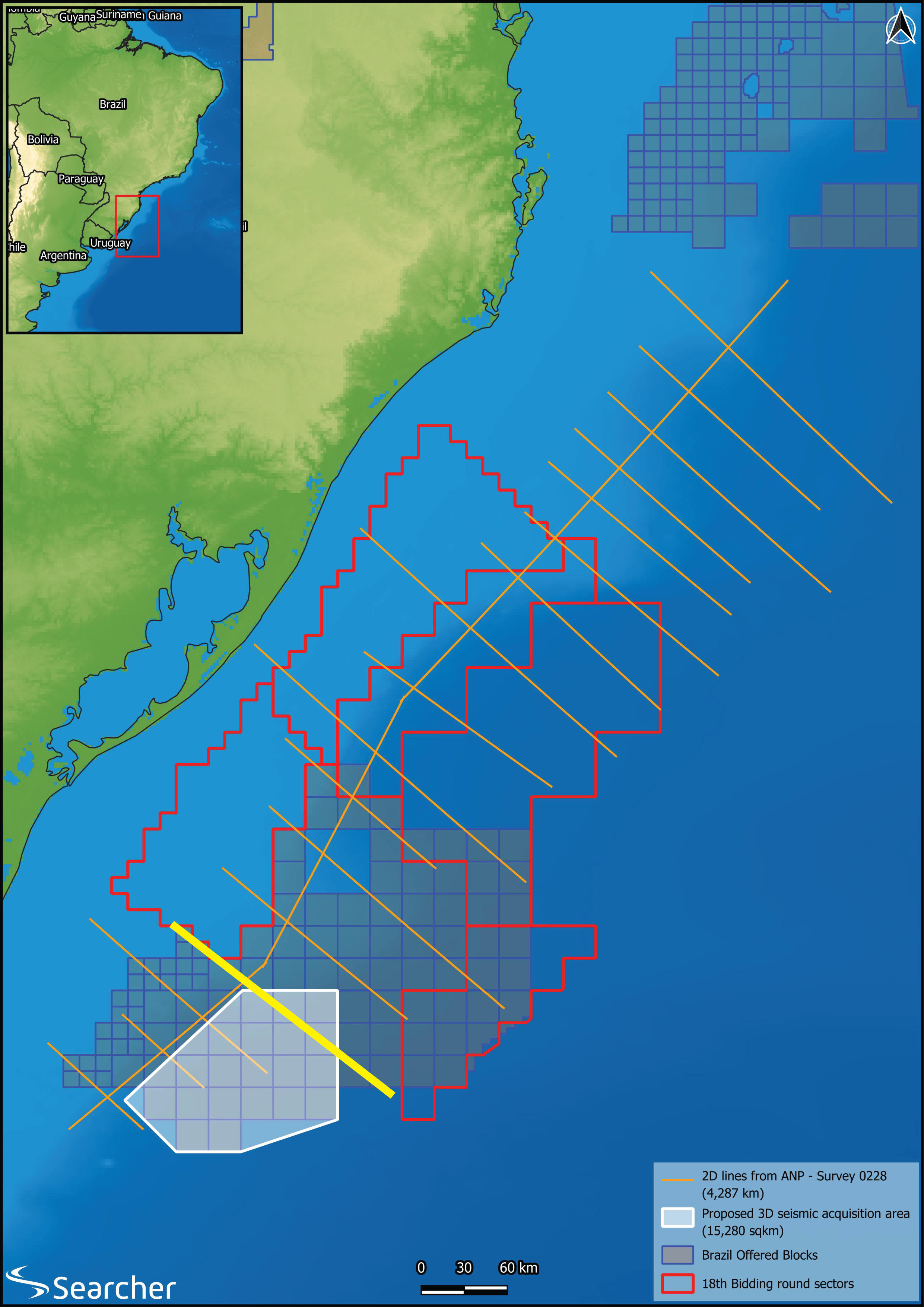Two for the price of one: Source rocks aplenty fuel South America’s next exploration frenzy
Across the globe, explorers are waking from a disturbing dream where the oil and gas industry was vilified into a new dawn where ‘accessible’, ‘available’ and most importantly ‘affordable’ hydrocarbons still have a role to play in propelling humanity towards a sustainable, better world. In the recently explorable deepwater space the prospects are bigger than ever, keen geoscience is making success huge and repeatable, and explorationists are the cool cats again.
Chasing source rocks
As oil and gas explorers, we need to locate oil and gas generative horizons and understand how the ravages of time may have led to them expelling
hydrocarbons. We could short-cut this issue by looking for direct evidence of generation and migration; slicks or direct hydrocarbon phenomena on seismic.
The huge mountain prospects offshore Sudan would be an example where the source story is obviated by multiple repeating natural oil slicks. The questions of source risk then reduces to “what else could have created these observations?”, relieving the need to understand the issue at all.
Alternatively, we can use well data, outcrop geology and interpretation to jump information on source rocks from the explored shelf into the unexplored deep basin. The sources are then “basin-modelled” theoretically to see if, and when, they might have been hot enough to be mature, and if migration from the source at some point may have filled our reservoirs and traps.
There are lots of places for cup and lip to misconnect on shelf to basin jumps, as we have to make a raft of best guesses in this “string of small miracles” approach. Sometimes this works brilliantly and other times, not so much – especially in new basins as best guesses with few constraints
can let us down abruptly.
Conjugate margins source rocks: You know it makes sense
So, where you cannot jump off the shelf, then sometimes you must jump continents. From the geology of one margin into similar geology on another
– its conjugate (Figure 1). Gestated together like twins they drift apart with plate tectonics, but they share characteristics of their genesis in their DNA.
In this way, the Aptian source rock of Namibia can be correlated to its twin in the Pelotas Basin of Southern Brazil and Uruguay. The Aptian source rock
is clearly identifiable in the seismic of the Orange Basin in Namibia as a soft topped unit with lower internal frequency, little internal structure, standing out in AVO space as a classic strong type IV anomaly.

AVO has historically been used as a tool to look for oil or gas in clastic reservoirs i.e., a DHI tool yet in our process (and multiple other examples since the technique was promoted by Løseth et. al. in 2011), we turn this on its head and use AVO to characterise and identify source rock.
The Aptian source has proved so effective in Namibia with TotalEnergies’ Venus-1 discovery and Shell’s four up-slope discoveries, all charged from the Aptian source rock, potentially offering tens of billions of barrels of recoverable light oil.
It is no surprise at all that this source rock can also be identified from its seismic character in the Pelotas Basin of Brazil and Uruguay where it presents the same as Orange Basin but thicker and has a similar Type IV AVO response. The only surprise is that the Aptian sourced plays in this basin remain untested on this margin.
Like human un-conjoined twins though, the Pelotas Basin’s lifestyle choices have varied somewhat from its Orange Basin twin. The continual dynamic topography induced instability of the Namibia margin and a lower sediment supply via the Orange River has led to a comparatively thin sedimentary section than is observed in Pelotas. Pelotas’ sedimentary section however is demonstrably stable, where no dynamic topographic inversion and shelf collapse has occurred and sediment supply via the proto-Platte River has been prodigious, generating a rather more generously proportioned sedimentary deposit than its West African twin (Figure 1).
Therefore, only at the edges of the Pelotas Delta is the Aptian source rock buried just deep enough to generate Oil (Figure 2). In such places, the Aptian is prodigious and is no-doubt charging some of the worlds’ biggest prospects in the Cretaceous counter regional play. It is here that Searcher is acquiring 3D seismic in 2023/4 season.

Elsewhere, the Aptian may indeed be buried too deeply, generating gas (Figure 2) and frustrating explorers too slow to access acreage at the edge of the Pelotas delta, yet who remain eager to try the conjugate leap from Namibian success to Brazil and Uruguay.
In such overburden-rich places, then the slope channel plays of the Upper Cretaceous appear shipwrecked by the sediment load, and all looks lost. To
progress we need to find a shallower source rock, with less overburden. And so, we embark on a new hunt for cryptic clues using the remote sensing tools we have, integrating with the geological stories we have learned on our journeys.
Clue hunting
Within the world of Enigmatology, Cruciverbalists (crossword solvers) have their own lexicon. You can ‘Parse’ an answer (work out the cryptic clue) or ‘Biff’ it (when the word fits but you do not know why). There are ‘anagrams’, ‘charades’, ‘containers’ or ‘hidden’ clues to name a few styles in the cryptic milieu.
Our favourite though are the ‘Ikea’ clues – where the clue comes in parts that you then have to self-assemble to find the answer. The first part of the “Ikean” thick-Pelotas clue, has actually been with us in the Orange Basin for 30 years, where work by many authors identifies the Cenomanian/
Turonian (C/T) source rock in the basin.
The Cenomanian/Turonian black organic rich shale is identified as OAE II, a globally important source rock associated with global Ocean Anoxia
Event leading to deposition and preservation of thick, high TOC (carbon rich) mudstone sequences around the world. The C/T source rock has been modelled countless times in the Orange Basin but a lack of sedimentary cover thickness there indicates immaturity for hydrocarbon generation. The lack of success drilling plays charged from the C/T source would tend to support this assertion.
Like an amnesiac conjurer, we have forgotten that a trick played once, can be performed again. Proven in the Orange Basin, is is likely that the C/T source rock will also be present in the conjugate Pelotas Basin where it is buried under a thicker overburden. Indeed, in the thickest parts of the Pelotas, the C/T is buried with a depth of cover similar to that of the Aptian source at the edge of the delta.
In Pelotas, the C/T is identifiable as a soft topped unit with lower internal frequency, little internal structure, and stands out in AVO space as a classic, strong type IV anomaly (Figure 3). This is then a repeat of the proven Aptian Conjugate source rock sleight of hand – but this time applied to the global Milankovitch cycle related OAE II event in the Orange Basin of Namibia.

Taking the characteristics from the numerous penetrations of the C/T source in Namibia and applying that to the depositional sequence from the thicker Pelotas delta we find not only that the sequence would be generative, but generative for oil.
In Uruguay, the same phenomena have been identified recently by a team led by Ancap and Searcher, collaborating with EMGS and an additional form of remote sensing data – CSEM (Controlled Source Electro Magnetism). Normally, CSEM is used to spot resistive oil-bearing sands in a clastic sequence. However, like AVO, it is just as able to be used to hunt for source rock.
The results of a collaboration between Seismic and CSEM to hunt the C/T source rock in Uruguay is due to be revealed at the First EAGE Conference on South Atlantic Offshore Energy Resources to be held in Uruguay in September 2023.
Leaping from the proven Cretaceous sources of the Orange Basin to the unexplored Pelotas Basin of Southern Brazil and Uruguay requires no great stretch of the imagination. This will be a small step for an oil company but a giant leap for mankind as the future of affordable, accessible, and available hydrocarbons is secured for the remainder of our energy transition within the simple, big prospects with multiple source rocks that lie there.
If you are going to do a conjugate-leap though, why just bring one source rock with you when you can bring two?
References
Arthur, M.A., Schlanger, S.O. and Jenkyns, H.C. (1987): The Cenomanian-Turonian Oceanic Anoxic Event, II. Palaeoceanographic controls on organic matter production and preservation. Geological Society London Spec. Pub. Volume 26, p401-420.
Bray, R., Lawrence, S. and Swart. R (1998): Source rock, maturity data indicate potential off Namibia. Oil and Gas Journal.
Campher, J. C., di Primio, R, Kuhlmann, G., van der Spuy., D. and Domoney, R. (2009): Geological Modelling of the Offshore Orange Basin, West Coast of South Africa. Search and Discovery Article #10191.
Davison, I., Rodriguez, K., Eastwell, D., 2018. Seismic Detection of Source Rocks. GEO EXPRO, Volume 15.
Eastwell, D., Hodgson, N. and Rodriguez, K. (2016): Source rock characterization from seismic in frontier basins a global approach. First Break, Volume 36.
Hart, M.B. and Leary, P.N. (1989): The stratigraphic and paleogeographic setting of the Late Cenomanian ‘anoxic’ event. Journal of the Geological Society, Volume 146, p 305-310.
Hartwig, A., di Primio, R., Anka, A. and Horsfield, B. (2012): Source Rock characteristics and compositional kinetic models of Cretaceous organic Rich shales offshore Southwestern Africa. Organic Geochemistry, Volume 51, p 12-34.
Hodgson, N. and Rodriguez, K. (2017): Shelf Stability and Mantle Convection on Africa’s Passive Margins (part 1). First Break, Volume 35.
Hodgson, N. and Rodriguez, K. (2018): Toward a global tectonic model: A new hope (Part 2) First Break, Volume 36.
Hodgson, N. and Rodriguez (2023): Sudan’s Red Sea Oil. GEO EXPRO, Volume 20.
Jenkyns., H. C. (1980): Cretaceous anoxic events: From Continents to Oceans. Journal of the Geological Society, Volume 137, p 171-188.
Løseth, H., Wensaas, L., Gading, M., Duffaut, K. and Springer, M. (2011): Can hydrocarbon source rocks be identified on seismic data? Geology, Volume 39 (12): 1167–1170.
Rodriguez, K., Hodgson, N., Hewitt A. and Intawong A. (2016): The Future of Oil Exploration. First Break, Volume 34.
Rodriguez, K., Hodgson, N., Rodriguez, P, Conti, B. and de Santa Ana, H. (2022): The rise of Venus in Uruguay’s Pelotas Basin. GEO EXPRO, Volume 19.





